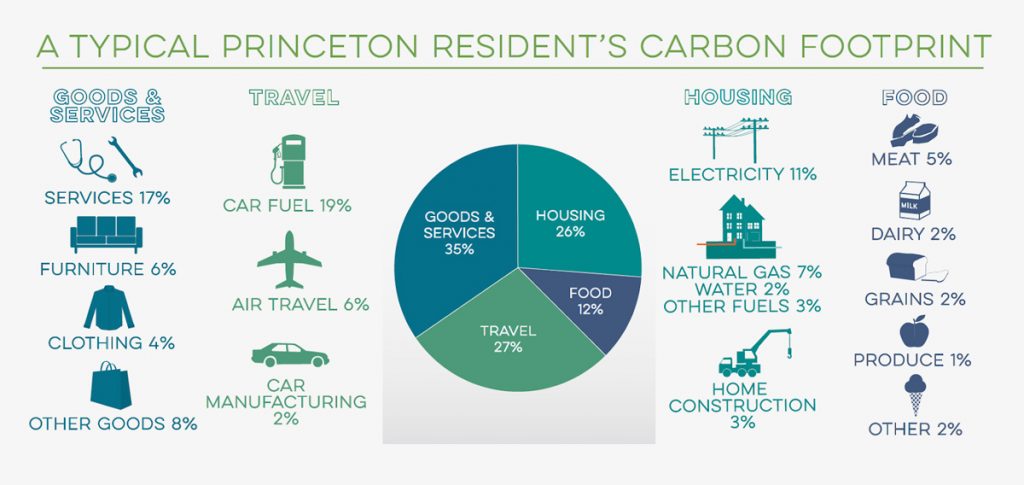Even the most routine activities — doing the laundry, driving to work, or deciding what to serve for dinner — impact your contribution of greenhouse gas emissions. You make decisions hourly that affect your personal carbon footprint.
We aren’t trying to pile on guilt — our activities produce emissions too — but we want to provide you with the information you need to make informed decisions.
After learning your personal footprint, start to make changes that will do the most to lower your greenhouse gas emissions.
Calculate your footprint:
Step 1: Analyze.
Visit coolclimate.berkley.edu/calculator to get a baseline of your personal carbon footprint.Step 2: Act.
After completing the calculator, take action. The calculator will suggest a number of ways you can reduce your footprint, listing the upfront cost as well as the money you will save with each action.
Knowledge is power.
The average Princeton resident’s footprint — based on average income and other regional factors — looks like this. However, your footprint can be quite different depending on your housing situation, travel patterns, food choices and shopping habits.
Did you know?
- A big piece of the pie. The average Princeton household generates the equivalent of nearly 60 tons of CO2 emissions each year.
- We better get planting. Drawing down this volume of carbon emissions would require about 70 acres of forest annually, per household.




